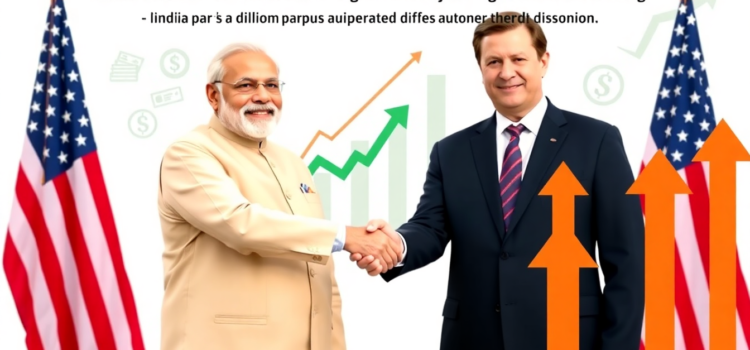
US-India Trade Deal Roadmap: PM Modi and JD Vance Aim for $500B by 2030
The bilateral negotiations between the United States and India have reached a significant milestone with the finalization of the Terms of Reference (TOR) for a Bilateral Trade Agreement (BTA). This ambitious roadmap sets a target of achieving $500 billion in bilateral trade by 2030, a major leap from the current figures. In 2024, the total goods trade between these two economic giants stood at $129.2 billion.
The key aspects of the US-India trade deal roadmap 2030 are aimed at addressing existing barriers and enhancing economic ties.
Strengthening US-India Economic Ties
In 2024, the United States imported $87.4 billion worth of goods from India, marking a 4.5% increase from the previous year. However, the U.S. faced a goods trade deficit of $45.7 billion with India. The BTA aims to balance this trade gap by addressing tariff and non-tariff barriers, thereby improving market access.
Crucially, India has initiated tariff reductions and expressed readiness for further cuts on U.S. exports. This mutual effort is expected to augment reciprocal tariffs between US and India, elevating the collaborative spirit between the nations.
The Strategic Partnership and Tariff Pause
Driven by a vision of an Amrit Kaal India trade vision and the Golden Age America trade strategy, PM Modi and JD Vance have taken decisive steps to forge a new era of economic collaboration. A 90-day tariff pause, announced by the Trump administration, serves as a catalyst for early conclusion US India trade talks. The temporary suspension aims to finalize an agreement before tariffs on Indian exports, especially seafood and marine products, see a return to 26%.
Comprehensive Trade Agreement: Key Elements
- Trade Objectives: Reinforce US-India supply chain integration with a focus on zero duty imports.
- Tariff Reductions: Encourage India avoiding American tariffs 2025, benefiting sectors such as energy and defense cooperation.
- Strategic Plans: Integration into the broader US-India COMPACT initiative for enhanced military, commerce, and technology partnerships.
The TOR includes 19 chapters, addressing tariffs, non-tariff barriers, rules of origin, and regulatory matters, which serve as the foundation for a modern US India trade agreement.
Impact on Business and Citizen Welfare
This new trade deal is expected to bolster job creation in both nations, enhancing citizen welfare under the US India economic ties strengthening framework. The comprehensive approach ensures not only economic benefits but also elevates the bilateral diplomatic stance that addresses global regional challenges.
FAQs
What is the primary objective of the US-India trade deal? The main goal is to establish a framework to boost bilateral trade to $500 billion by 2030.
Why is the tariff pause significant in the negotiations? The 90-day tariff pause aims to facilitate accelerated discussions, potentially leading to an interim or comprehensive agreement.
What are the challenges in improving US-India trade relations? Key challenges include addressing existing tariff and non-tariff barriers and ensuring reciprocal market access rights.
How does the trade agreement benefit both countries? It promotes economic growth through reduced tariffs, enhances job opportunities, and strengthens supply chain integration.
What sectors could benefit most from the elimination of tariffs? Sectors such as seafood, marine products, and defense could see significant benefits from reduced tariffs.










Comments